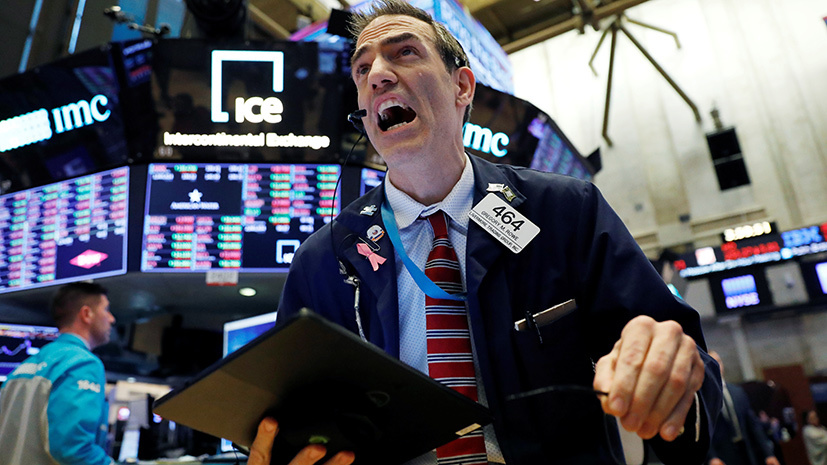World oil prices began to gradually return to position after what happened on the eve of a sharp drop in quotations. This is evidenced by trading data.
As of 09:30 Moscow time, Brent crude oil for delivery in May 2020 on the ICE exchange in London is adding 7.25%, up to $ 36.85 per barrel. In addition, April WTI futures rose 6.68% to $ 33.21 a barrel.
Note that on the eve of the cost of a barrel of North Sea Brent and Texas WTI updated their lows from January and February 2016, respectively. At the peak of the fall, prices fell to $ 31 and $ 28 per barrel.
This happened as part of the strongest decline in energy prices since 1991. In 1991, similar events unfolded against the backdrop of the US military operation Desert Storm.
The reason for the current shock at the auction was the failed negotiations on the OPEC + deal in Vienna on March 6. Participants, including Russia, could not agree on an additional reduction in oil production, which was proposed in connection with the spread of the coronavirus infection COVID-2019.
On the eve of the Minister of Energy of the Russian Federation Alexander Novak said that Moscow proposed to extend the agreement on existing conditions at least until the end of the second quarter, in order to better understand the situation with the influence of coronavirus on the world economy and oil demand.
“The Russian oil industry has a high-quality resource base and a sufficient margin of financial strength to remain competitive at any predicted price level, as well as maintain its market share,” he added.
Note that after negotiations in Austria, Saudi Arabia announced its intention to increase production to 10 million barrels per day and notified buyers of raw materials from the United States, Northern Europe and Asia about the reduction in oil supply prices. According to the media, these are the largest discounts in the last 20 years.
At the same time, US President Donald Trump called Riyadh, as well as Moscow and the "fake news" guilty of what happened the day before in the global economy.
“Saudi Arabia and Russia are arguing about the price and volume of oil production. This, as well as fake news, is the reason for the fall of the market! ” - wrote the head of the White House on Twitter.
- Reuters
- © Andrew Kelly
We add that the fall in oil prices led to a strong weakening of the Russian currency. On March 9, at international bidding, the dollar for the first time since March 2016 exceeded the mark of 75 rubles. At the same time, the euro rose to 86 rubles. The last time a similar indicator could be observed in February 2016.
Currently, the dollar is traded on the Forex market for 73.1 rubles, the euro - 83.1 rubles.
Against the background of what happened the day before, Russian Prime Minister Mikhail Mishustin held a meeting on economic issues. Measures to maintain the stability of the Russian economy were discussed. The meeting was attended by First Deputy Prime Minister Andrei Belousov, Deputy Prime Ministers Yuri Borisov and Dmitry Grigorenko, Minister of Finance Anton Siluanov, Minister of Energy Alexander Novak, Minister of Economic Development Maxim Reshetnikov, Assistant to the President Maxim Oreshkin, Central Bank Chairman Elvira Nabiullina.
“Until the beginning of April, the price will fluctuate”
According to Igor Yushkov, an expert at the Financial University under the Government of Russia, a leading analyst at the National Energy Security Fund, there is currently a “certain rebound” in oil trading after yesterday's fall.
“Now it is being adjusted, traders began to buy futures, but again, we probably will not enter the previous corridor. At around $ 50, oil will probably no longer be traded, ”RT said.
According to him, the next price change can be expected by the end of March, when the current OPEC + agreement expires.
“If, again, OPEC + participants do not agree on anything, then from April 1 there will again be a drop in prices, since production quotas are still in effect, and from April 1 there will be no restrictions. Until the beginning of April, we will hesitate, traders will catch the news: whether there will be an OPEC + meeting or not, someone is preparing to increase production, someone is not preparing, a new agreement will be signed, there will not be - prices will jump on these news. But I think that they will be more likely in the corridor of $ 35-45, and not as it was before - $ 50-60 per barrel, ”the analyst said.
As an expert from the Russian Institute for Strategic Studies (RISI), Mikhail Belyaev, Ph.D. At the same time, the situation with the spread of coronavirus influenced the drop in quotes.
“The combination of these two factors played a role. Now there are chances that we can see that acting out the acute situation brings more equilibrium, and prices are restored to the level that is closer to economically justified. It is difficult to say whether it will again reach a level of about $ 50 per barrel. We need to see how events will develop further. In particular, the behavior of the main parties - Russia and Saudi Arabia, all OPEC countries, in principle, other producers and consumers, ”the expert explained in an interview with RT.

